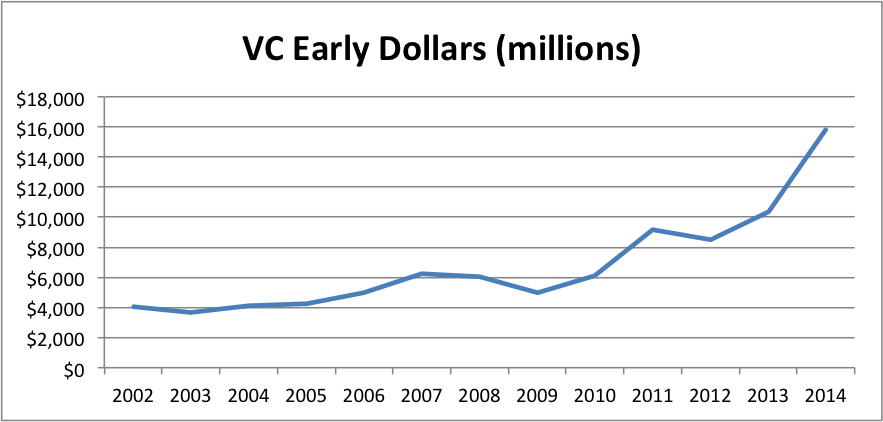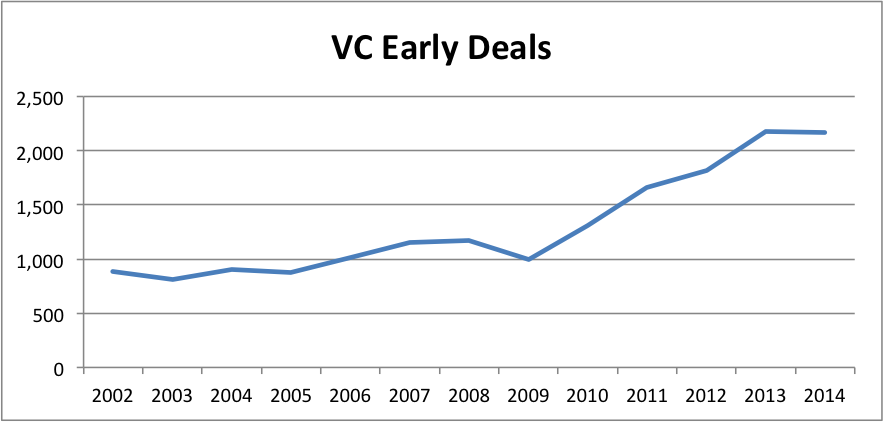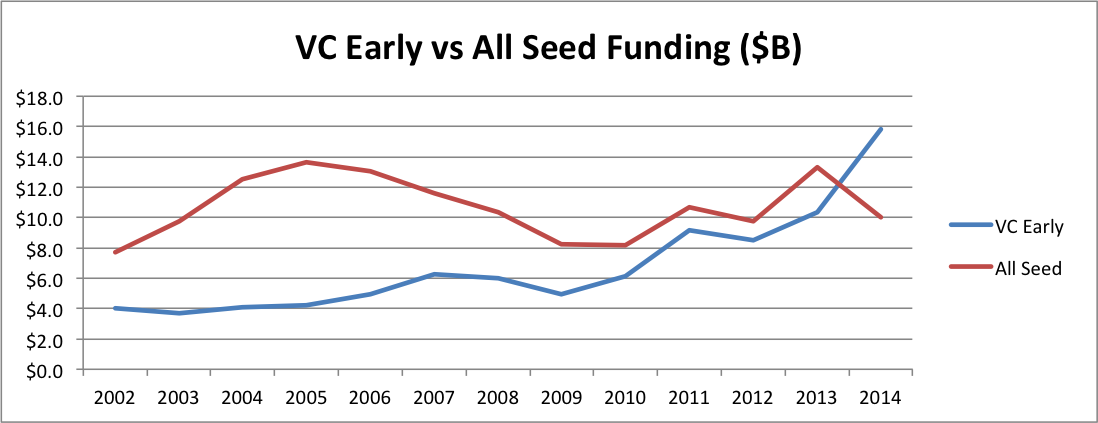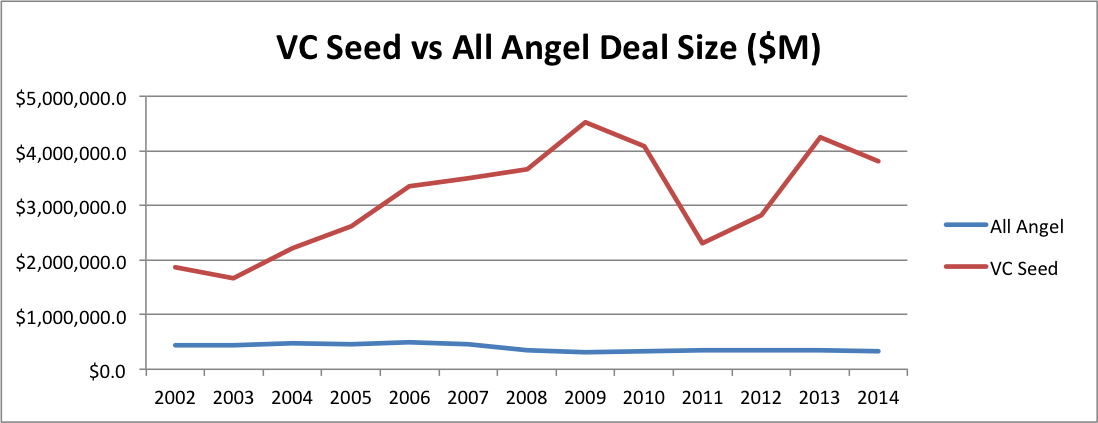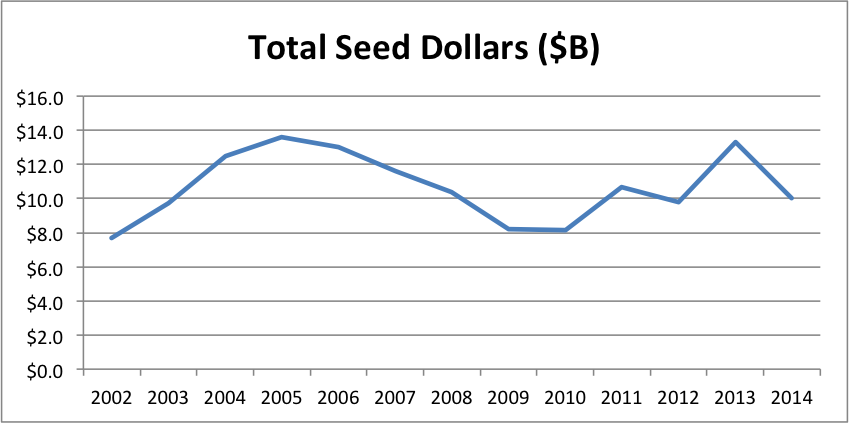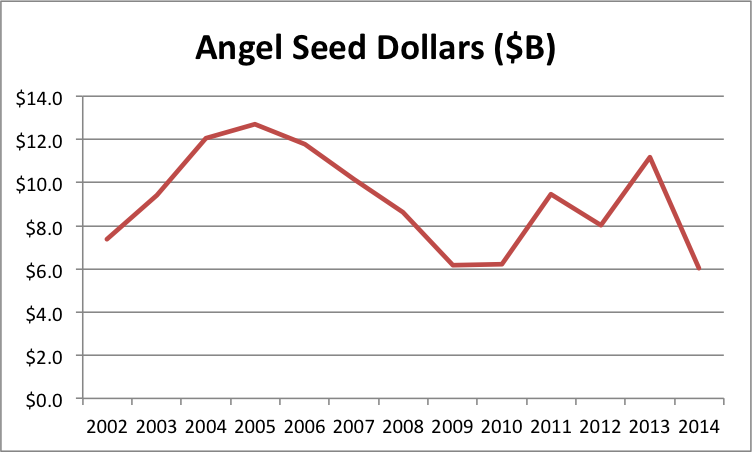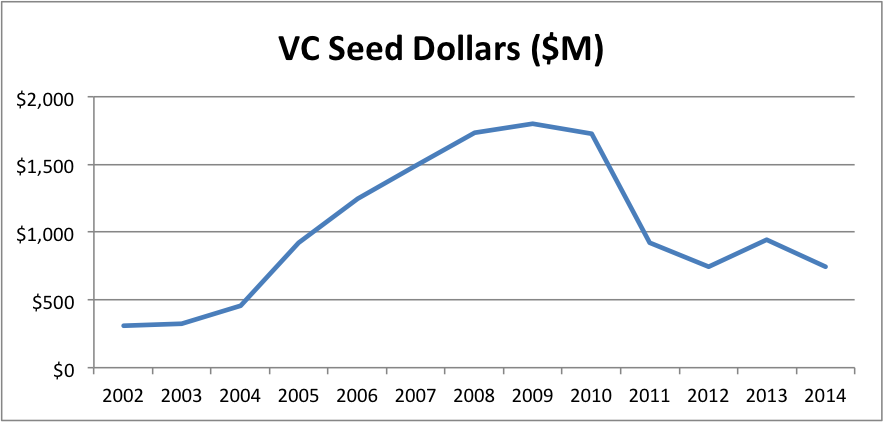Have you ever finished an arduous task and thought to yourself, “Argh! I went about that all wrong. Why didn’t anyone warn me?” Well, if you’re thinking about raising a seed round, here’s me warning you 🙂
When faced with a challenge, most entrepreneurs seek out as much data as possible, then wade in and start trying to make things happen. For fundraising, that probably means poring over TechCrunch, listening to as many “founder stories” as possible, and dissecting the top VCs’ blogs.
Of course, every one of these channels suffers from massive selection bias–only unusual events are noteworthy enough to make it through their filters. And fundraising is one of those processes where, if you optimize for the unusual case, you hurt yourself in the typical case.
At RSCM, we’ve either observed our portfolio companies raise or directly participated in 100s of seed rounds over the last 4.5 years. We are intimately familiar with the typical case and have developed a corresponding “small seed playbook”. And, should you be lucky enough to find yourself in the right tail of the fundraising curve, there’s any easy upgrade path.
Too Much Money, Obsession with a “Lead”
The most common mistakes in raising a seed round are: a headline amount that’s too large and getting anchored on the concept of a “lead” investor.
Raising seed is rarely easy. But there’s a very steep gradient in difficulty as you move from a $500K to $1M target. In that range, you usually need substantial revenues, a clearly pedigreed team, or anti-gravity class technology. Sure, there’s some chance you could find investors who simply fall in love with you and your idea (most likely if you’re in the SF Bay Area or NYC), but the probability is low and the expected search effort is high.
Even if you satisfy one or more of the extreme requirements, as you get towards $1M, a lead investor becomes more and more necessary. Now, you may be thinking to yourself, “That’s OK; I want a lead!” Hmmm. If you’re an engineer, what would you think if someone said, “I want an architecture with a single point of failure!” Or in marketing, “I want a campaign targeted at users with low conversion rates!” Or in sales, “I want prospects with long sales cycles!” Yes, there are cases where that is in fact what you want, because there are other factors that balance out the obvious drawbacks. But as a rule of thumb, it’s a mistake.
Suppose you plan your round around a lead from the outset. If you don’t end up finding one, you have precisely zero dollars to show for your efforts. Moreover, the universe of lead investors is much smaller than that of all investors, so the prospecting job is correspondingly much harder. Finally, it typically takes a lot longer to get a first serious meeting with a potential lead investor, let alone close the deal. You’re probably in for a much longer fundraising cycle, which has tremendous opportunity cost in terms of building your business, especially at the seed stage.
Unless you truly meet some of the aforementioned extreme criteria, this path is probably not optimal. Our recommendation is that you don’t start a seed raise by looking for a lead unless you have at least $20K in monthly revenues, a dozen professional investors who have proactively expressed interest, or your business simply cannot move forward without a large chunk of capital.
Modest Raise, Brick-by-Brick, Graduated Price
So what do you do if you have zero to small revenues and don’t have a lot of VCs on speed dial? Start with a modest headline amount, $250K to $500K. Your plan will have to show you making decent progress with this amount of money. Make sure your development schedule and cash burn support you hitting a reasonable milestone with that much runway. And be prepared to tighten your belt; fundraising almost always takes longer than expected.
Then get your first commitments from your most enthusiastic supporters and members of their immediate networks. Usually, when I ask a company who is planning or trying to raise if they have anybody close to the company (friends and family, advisor, early customer, etc.) who could write a small check, the answer is yes. When I ask them why they haven’t tried to close the money yet, the answer is usually some combination of, “It doesn’t really move the needle,” and “We don’t know what terms to use.”
At the very beginning of a raise, pretty much no check is too small. You need to get the ball rolling. You also need to show momentum. So use attractive terms that lead to a quick close. I recommend a convertible note with the standard 20% discount and 5% interest, plus a very compelling cap. If you have an attractive valuation, people will not mind so much that you don’t have a lead investor. The plan is to start the cap low and raise it gradually as you build momentum.
Now, a lot of founders worry about dilution and lose sleep over getting “fair” value. Don’t. $100-200K worth of dilution at a valuation even 30 or 40% below what you think is market just won’t make very much difference in the long run–I assure you that there are much worse dilution potholes on the road to liquidity. And fundraising is a terrible distraction from operating your business, so an investor willing to move quickly is valuable.
You must make clear that you’re offering the earliest investors the great deal partly in return for moving quickly (the other part is due to the special relationship and/or value-add of the investor). Otherwise, most investors will dither. Sometimes it helps to tie the great deal to some sort of natural deadline like an accelerator Demo Day, a significant software release, or a large customer close. Creating a sense of urgency is much easier said than done, but you need to try.
Somewhere after $100-200K, you bump the cap up. “The great deal” becomes “the good deal”. The size of the bump depends on what the market tells you. If you closed the first chunk really fast and you have a big pipeline of prospects, bump the cap two notches. If the first chunk was still a fair bit of work or your pipeline seems thin, only bump it one notch. But keep the time pressure on to the extent you can. “The good deal” is also a limited time offer, perhaps tied to yet another natural deadline.
Once you have the first two chunks in, you can start to play a little more strategically. Getting half the the round closed often generates psychological momentum. You’ll also have money in the bank, which helps your negotiating position. And you’ll hopefully have made further engineering and customer progress, which makes you less risky. You can bump the cap again. You can also start trying to work AngelList and look to bigger geographies like San Francisco or NYC (if you’re not based there already). You can event start seriously probing small funds who lead rounds. This is where the upgrade path comes in.
Sidebar: Process Is Key
Before I get to upgrading a small seed round to a big seed round, I need to make a point about process. Like achieving any other company objective, fundraising works better if you impose some structure on it. You absolutely must track prospects, either in a spreadsheet or a CRM.
I recommend a couple of prospect categories: first checks, second checks, later checks, and round leads. Initially, focus on developing lists for the first two categories. You will also naturally generate names of people within your network that fall into the second two categories, but don’t devote too much energy to extending those lists until you’re ready to actively pursue those categories.
Now, start talking with all the first check prospects, focusing on two initial objectives. First, qualify each prospect. There are three basic qualification states: (1) does in fact appear to be a potential first check writer, (2) doesn’t appear to be a first check writer but may be a second or later check writer, or (3) doesn’t appear to be a check writer at all.
Second, try to expand you lists through the prospects’ networks. Ask class (1) prospects if they know anyone else who is as decisive as they are or investors that tend to follow their lead. Ask class (2) prospects if there’s anyone who they like to follow or people they typically participate alongside. In my experience, members of class (3) rarely make good referrals.
After you work through the first check prospects, move on to the second check ones, with parallel qualification and list expansion objectives.
If you have time during the first check and second check prospecting, do some modest scouting of the later check and round lead prospects. Go ahead and schedule some first meetings. These prospects probably have long scheduling lead times and require multiple stage-setting meetings anyway. The goal here is not to close them (though if they fall in your lap, seize the opportunity). Rather, the goal is gather intelligence on what they’re looking for and start building a relationship. Try to keep detailed notes in whatever tracking system you use.
Oversubscribe, Entertain a Lead, Convert if Necessary
OK, back to upgrading. Please keep in mind this is no longer the base case. Most no-to-low revenue startups never get to this point.
Suppose first-check demand justified a two notch bump in your cap, second-check demand seems strong even at the higher price, and later-check and lead scouting has yielded a promising pipeline. Further suppose that you’ve made good operational progress in the meantime. If all these stars align, you can attempt the upgrade.
In this everything-goes-smoothly scenario, you should be having lots of positive meetings with later-check prospects. At some point, it may look like you’ve got more “soft-commits” from later-check writers than you have room (assuming you stick to your original target amount). Or you may receive strong buying signals from some of your lead prospects. If either of these conditions are true, do one of two things:
- Force a quick close and oversubscribe if desired. Tell all interested investors that it looks like you might be oversubscribed. Make it clear that you need to get firm commitments so you can figure out if there is any room left. In other words, use scarcity and social proof to get investors to move. You can then decide whether you want to raise a larger amount than your original target.
- Move to close any viable professional funds as “leads”. The term “lead investor” is confusing. You naturally assume they come first. In $1M+ rounds they usually do, but in seed rounds they often just take everything left at the end. A situation that often arises is you’re talking to a potential “lead” investor that only writes $250K+ checks, but moves very slowly. At the same time, you have several later check writers that you feel you can pretty quickly and you probably don’t have room for everyone. In this situation, you need to force the action with the potential lead investor. Give them a deadline and tell them you need a term sheet in 7-10 days or you will close your existing pipeline. Absolutely do not risk losing other investors because you want to hold out for the “lead”. When you are a low revenue company, always take the bird in the hand.
The goal in both cases, obviously, is to create a sense of both scarcity and urgency. As a low revenue startup you rarely have leverage when fundraising. Anytime you do find some, use it
Most institutional investors these days are comfortable leading a seed round with a convertible note structure. There are still a few that have a strong preference for priced rounds. If you run into one that insists on a preferred equity financing and you’ve already close a bunch of investors on notes, don’t sweat it. You can always convert all the other notes into the preferred round.
Parting Wisdom
Remember, it’s usually pretty easy to adjust and pivot when things go better than expected. So you don’t need to plan much for those scenarios. This playbook is targeted at the usual case. Oversubscribed and led seed rounds are the exception rather than rule.
Depending on market conditions, I would say only 10-20% of seed rounds are “led” in any meaningful sense and another 10-20% are oversubscribed from a modest original target. So 60-80% are just ordinary, every day seed rounds that take a while to close and have no real lead investor. Which is totally fine. Fundraising is really hard. $250K to $500K is a win. That’s roughly a year of runway and I’m continually blown away at what entrepreneurs manage to accomplish in a year.

